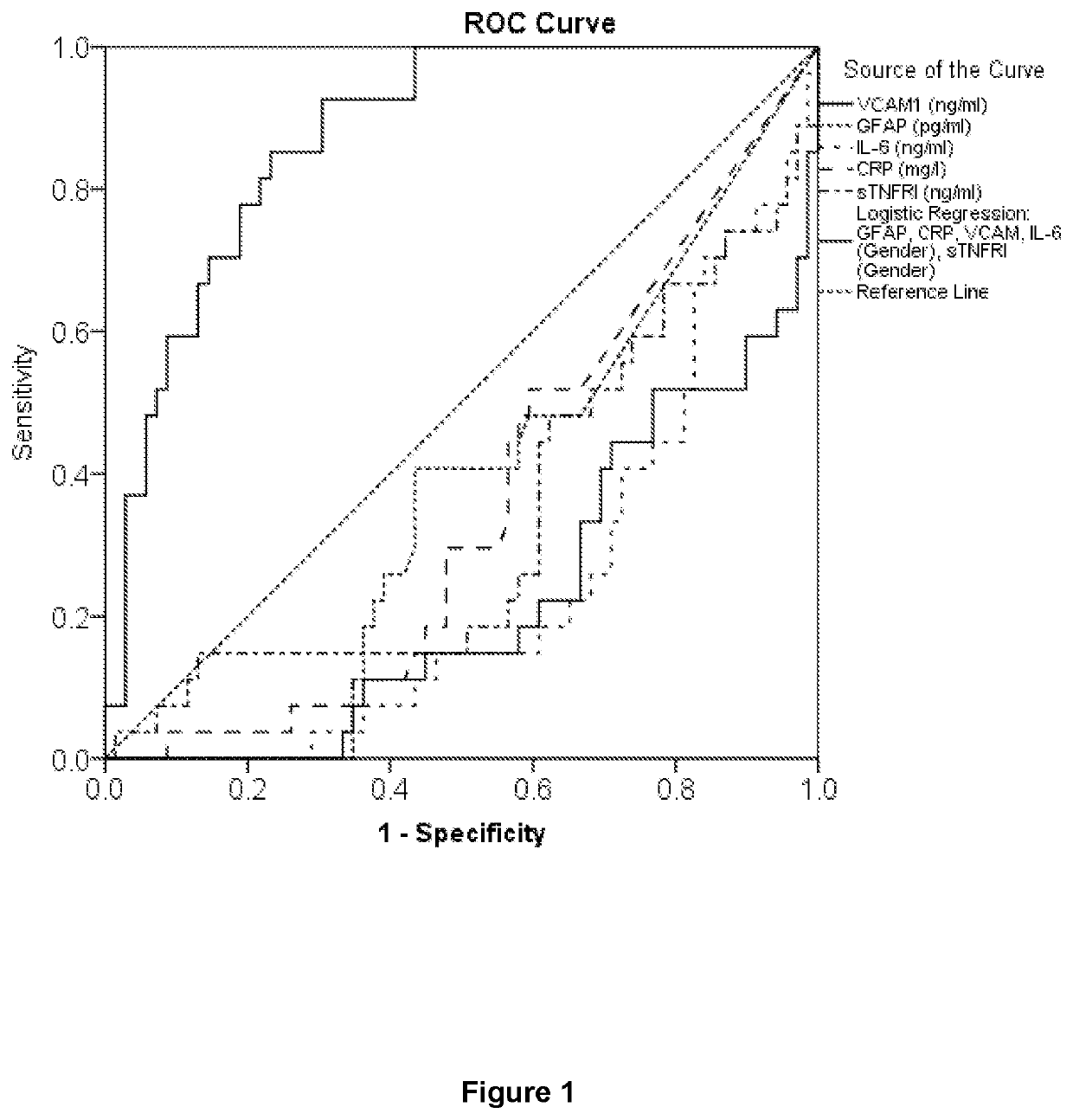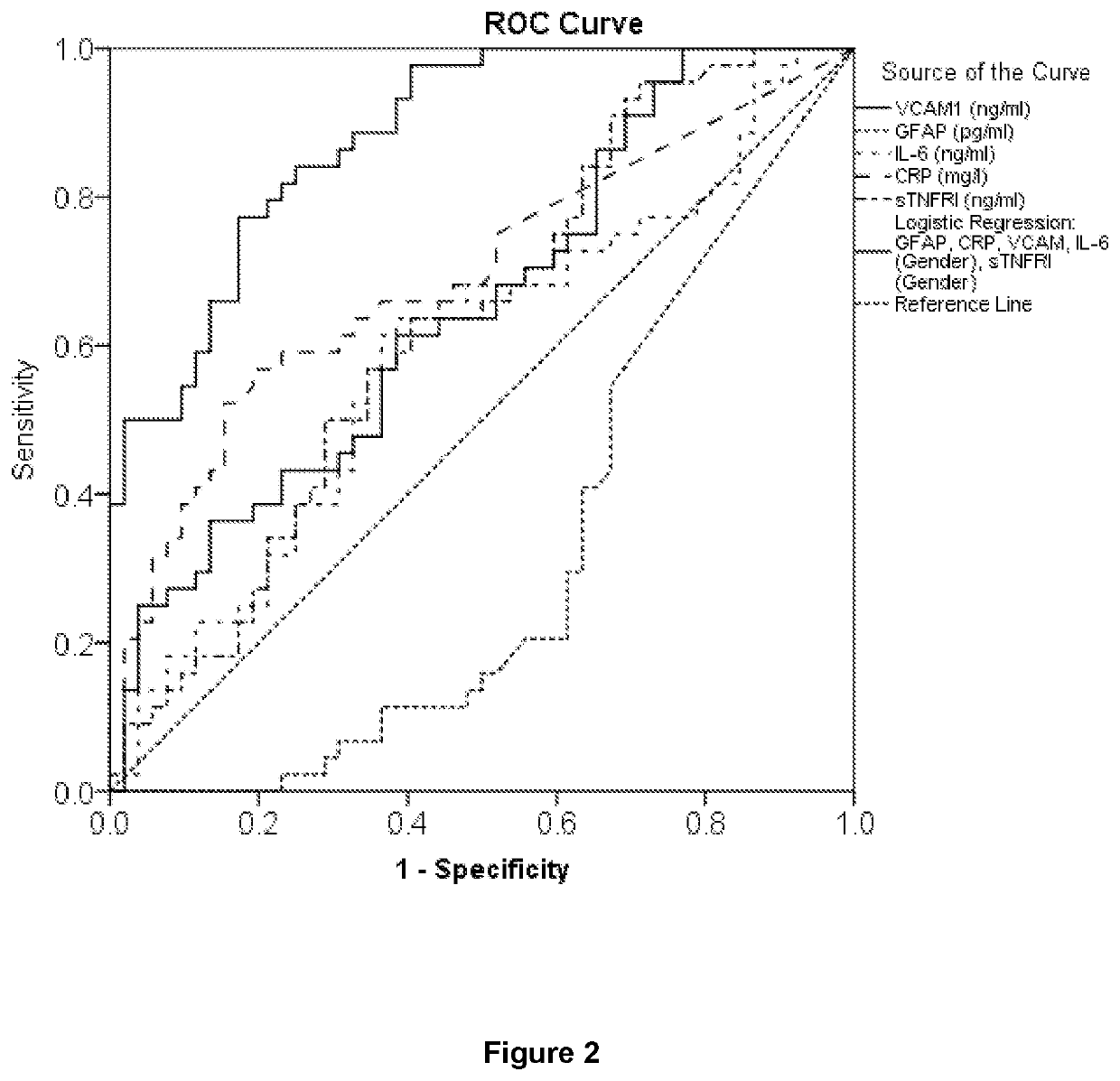Method for aiding differential diagnosis of stroke
a stroke and differential diagnosis technology, applied in the field of stroke differential diagnosis, can solve the problems of brain damage, only warranting therapy, and poor sensitivity for identifying is and tia patients, and achieve the effect of reducing the risk of stroke, and improving the sensitivity of diagnosis
- Summary
- Abstract
- Description
- Claims
- Application Information
AI Technical Summary
Problems solved by technology
Method used
Image
Examples
example
Patient Group
[0061]The study consisted of 98 patients displaying stroke symptoms admitted to the Emergency Department of KAT General Hospital, Athens, Greece. Blood samples were taken at the time of admission and at days 1, 2, 3 and 7. The mean time from the onset of stroke symptoms and hospital admission was 3.2 hours. The mean age of the patients was 75.2 years (standard deviation 9.4). Clinician evaluation (using criteria highlighted in the Background section) and neuroimaging techniques identified 44 ischaemic stroke (IS), 25 haemorrhagic stroke (HS), 29 transient ischaemic attack (TIA); 60 healthy subjects served as controls (C).
Sample Analysis
[0062]The following proteins were tested against EDTA plasma samples of blood obtained from the patients of the study group: VCAM-1, GFAP, CRP, IL-6 and sTNFR1. The proteins were detected and quantified using multiplexed biochips incorporating biomarker-specific antibodies and the Evidence Investigator (Randox Laboratories Ltd, Crumlin, U...
PUM
| Property | Measurement | Unit |
|---|---|---|
| time | aaaaa | aaaaa |
| concentration | aaaaa | aaaaa |
| blood pressure | aaaaa | aaaaa |
Abstract
Description
Claims
Application Information
 Login to View More
Login to View More - R&D
- Intellectual Property
- Life Sciences
- Materials
- Tech Scout
- Unparalleled Data Quality
- Higher Quality Content
- 60% Fewer Hallucinations
Browse by: Latest US Patents, China's latest patents, Technical Efficacy Thesaurus, Application Domain, Technology Topic, Popular Technical Reports.
© 2025 PatSnap. All rights reserved.Legal|Privacy policy|Modern Slavery Act Transparency Statement|Sitemap|About US| Contact US: help@patsnap.com



